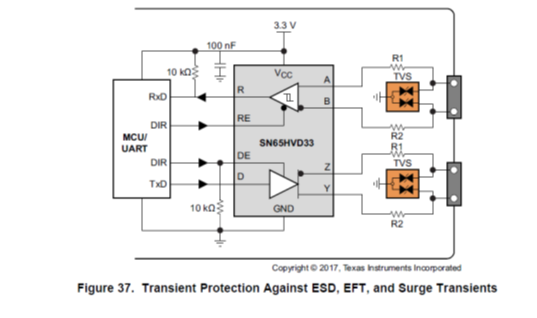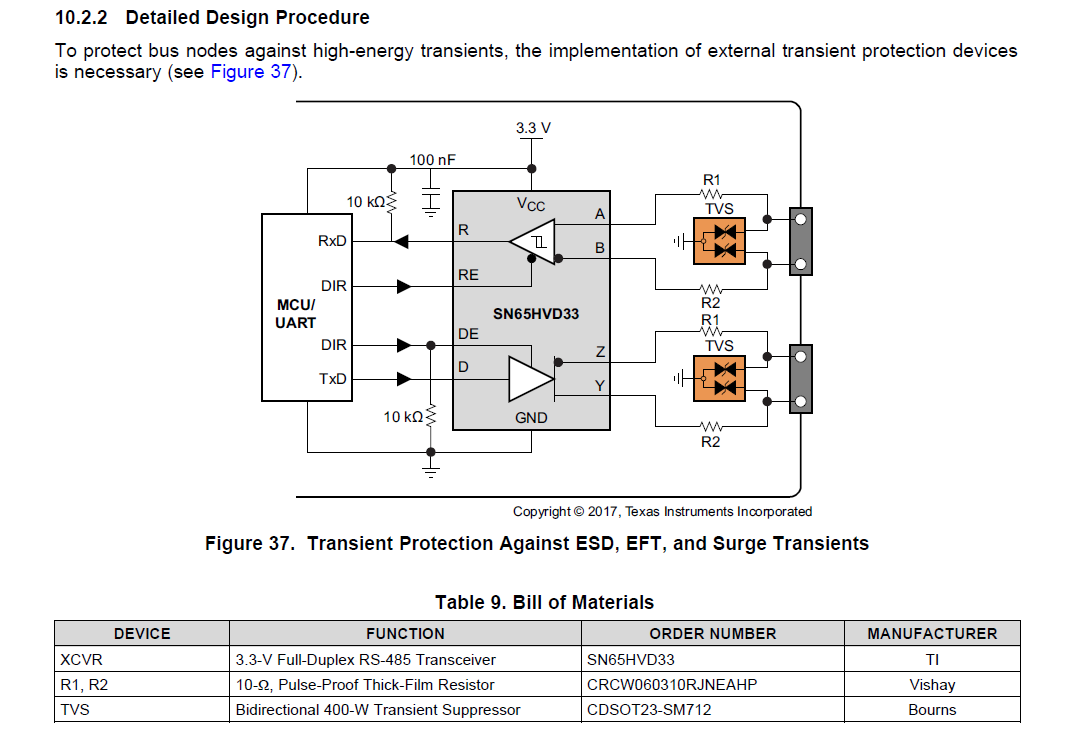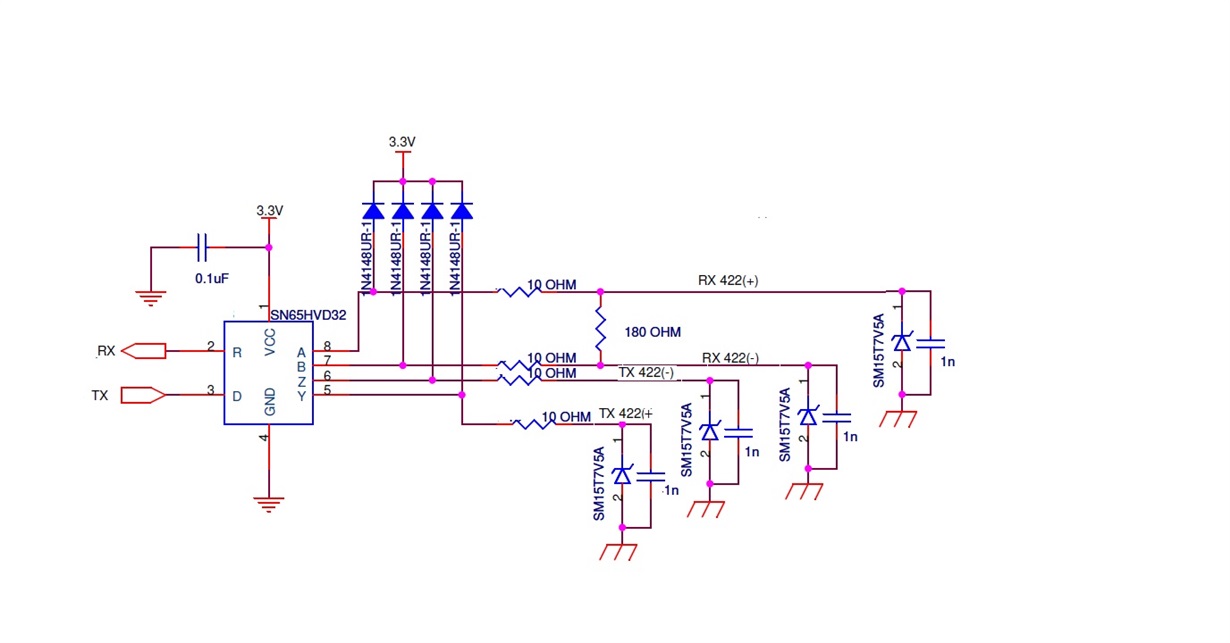Other Parts Discussed in Thread: SN65LBC184, SN65HVD33, SN65HVD1471, SN65HVD1474
Hi,
I use this IC as RS422 transceiver. My question is related to lightning and surge protection limitations:
I used a 10ohm high power pulse proof resistors at R1, R2, R3 & R4. Please refer to below snap shot taken form the device datasheet:
at R1, R2, R3 & R4. Please refer to below snap shot taken form the device datasheet:
During transient, upto 1.25A of peak current would flow through pins A, B, Z & Y to the IC. Transient pulse duration is 100usec. Clamping voltage of the TVS diode used in my circuitry is 14.5V.
Please confirm that internal circuitry of the device will be able to handle 1.25A transient current during 100usec pulse.
Best Regards,
Rajesh Kumar




